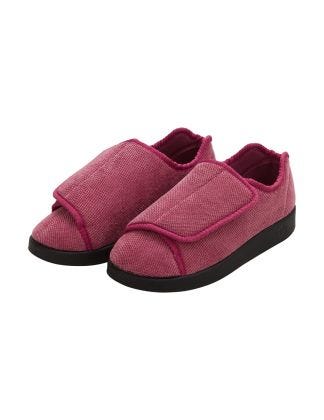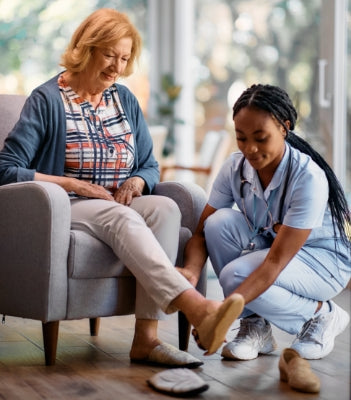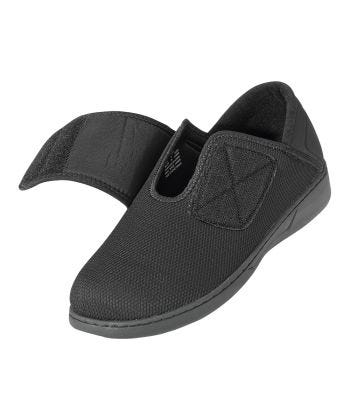Table of Contents
- Understanding Foot Health
- Common Foot Problems in Elderly Women
- Features to Look for in Comfortable Shoes
- Top Comfortable Shoe Brands
- Product Highlights and Recommendations
- Comparative Analysis of Top Brands
- Real-World Experiences: Case Studies
- Tips for Choosing Comfortable Shoes
- Pros and Cons of Various Shoe Styles
- FAQs about Comfortable Shoes for Elderly Women
- Conclusion
Understanding Foot Health
Proper foot health is foundational for overall well-being and mobility, especially for elderly women. Research from the American Podiatric Medical Association emphasizes the importance of wearing suitable footwear to prevent foot ailments and maintain balance.
As we age, the structure of our feet can change due to factors such as decreased fat pads, bone density loss, and other health issues like arthritis or diabetes. This makes investing in the right shoes paramount. Comfortable shoes should accommodate these changes while providing adequate arch support, cushioning, and stability.
Common Foot Problems in Elderly Women
1. Plantar Fasciitis
This common condition arises from inflammation of the plantar fascia, leading to heel pain, especially with the first steps in the morning. Supportive shoes can help alleviate this discomfort.
2. Bunions
Bunions are bony bumps that form at the base of the big toe, causing pain and discomfort. Shoes with a wider toe box can prevent further irritation.

3. Diabetic Foot Issues
Women with diabetes are at risk for neuropathy and infections, making it essential to choose shoes that provide protection and comfort.
4. Arthritis
Arthritis can limit mobility, making it important for shoes to provide both comfort and ease of entry, such as with elastic bands or Velcro straps.

Features to Look for in Comfortable Shoes
When searching for comfortable shoes for elderly women, consider the following key features:
1. Arch Support
Proper arch support helps alleviate stress on the feet. Look for shoes designed specifically for arch support to enhance comfort during extended wear.

2. Cushioned Insoles
A cushioned insole absorbs shock and provides a softer step, reducing the risk of foot fatigue.
3. Wide Toe Box
A spacious toe box allows the toes to move freely, which is crucial for preventing foot discomfort and conditions such as bunions.

4. Slip-Resistant Outsole
Safety is vital, and a slip-resistant outsole reduces the risk of falls, providing better grip on various surfaces.
5. Lightweight Construction
Heavy shoes can contribute to fatigue. Opt for lightweight materials that offer both comfort and support without weighing the foot down.

Top Comfortable Shoe Brands
Several brands specialize in creating footwear tailored for comfort and functionality, particularly for elderly women. Here are some of the top brands you should consider:
1. New Balance
Known for their high-quality athletic shoes, New Balance offers a range of styles featuring excellent arch support and cushioning.

2. Dansko
Dansko clogs are famous for their comfort and support, making them ideal for daily wear.
3. Vionic
Vionic shoes are designed with podiatrist-recommended technology, ensuring proper foot alignment and support.

4. Hush Puppies
This brand provides a variety of stylish yet comfortable options, perfect for casual or semi-formal settings.
5. Skechers
Skechers is known for its casual footwear that blends style and comfort seamlessly.
Product Highlights and Recommendations
Choosing the right shoe can significantly enhance comfort and mobility. Below, we highlight some top-rated comfortable shoe options:
1. New Balance 990v5

Features: Made in the USA; Cushioning and support; Available in multiple widths.
Pros: Excellent arch support; Durable materials; Stylish design suitable for various occasions.
Cons: Higher price point; May require a break-in period.
2. Dansko Professional Clogs

Features: Padded instep for comfort; Slip-resistant outsole; Available in various colors.
Pros: Great for standing all day; Easy to clean and maintain; Variety of stylish designs.
Cons: Might feel bulky to some; Not suitable for formal occasions.
3. Vionic Women’s Tide II Sandals

Features: Orthotic footbed for stability; Water-resistant materials; Adjustable strap for a custom fit.
Pros: Ideal for summer and casual wear; Excellent arch support; Stylish and versatile design.
Cons: May not provide enough support for extensive walking; Limited color options.
4. Hush Puppies Women’s Chaste Ballet Flat

Features: Soft leather upper; Memory foam footbed; Slip-on design for easy wear.
Pros: Stylish for dressy occasions; Good cushioning; Lightweight design.
Cons: May not provide enough arch support for some; Not ideal for wider feet.
5. Skechers Go Walk Joy

Features: Lightweight and breathable; High-rebound cushioning; Machine washable.
Pros: Perfect for walking and light activities; Easy to clean; Various colors and styles available.
Cons: Not suitable for formal occasions; Limited support for high arches.
Comparative Analysis of Top Brands
| Brand | Arch Support | Cushioning | Style Options | Price Range |
|---|---|---|---|---|
| New Balance | Excellent | High | Wide | $100 – $200 |
| Dansko | Good | Medium | Moderate | $100 – $150 |
| Vionic | Excellent | High | Moderate | $70 – $135 |
| Hush Puppies | Fair | Medium | High | $70 – $120 |
| Skechers | Fair | High | Wide | $50 – $100 |
Real-World Experiences: Case Studies
Case Study 1: Mary’s Journey with Plantar Fasciitis
Mary, a 68-year-old retiree, struggled with plantar fasciitis for several years. After trying various types of shoes, she found relief in the New Balance 990v5. With its exceptional arch support and cushioning, Mary reported significantly reduced foot pain, allowing her to enjoy daily walks with her grandchildren.
Case Study 2: Linda’s Work Environment
Linda, a 72-year-old nurse, stood for long hours at work, which aggravated her arthritis. She switched to Dansko Professional Clogs and found them to be a game-changer. The slip-resistant outsole and cushioned insole provided the perfect balance of comfort and stability, enabling her to perform her duties without excessive discomfort.
Tips for Choosing Comfortable Shoes
When searching for the perfect fit, keep these tips in mind:
- Get Professionally Fitted: Consider visiting a professional shoe fitter to determine your correct size and width, as this can significantly affect comfort.
- Try Before You Buy: Always try on shoes and walk around in them to assess comfort and fit. Ensure there’s enough room for your toes and that your heel doesn’t slip.
- Look for Adjustable Features: Shoes with adjustable straps or laces allow for a more customized fit, which is essential for comfort.
- Opt for Breathable Materials: Shoes made from breathable materials prevent moisture buildup and discomfort, particularly during warm weather.
- Replace Worn-Out Shoes: Regularly check the condition of your shoes, as worn-out soles or loss of support can lead to foot problems.
Pros and Cons of Various Shoe Styles
Athletic Shoes
Pros: Excellent support, cushioning, and shock absorption.
Cons: Bulky and may not suit all occasions.
Clogs
Pros: Easy to slip on, great for all-day wear, and provide support.
Cons: May not fit all foot shapes comfortably.
Sandals
Pros: Breathable, easy to wear, and stylish.
Cons: May lack support for extensive walking.
Flats
Pros: Stylish and versatile for various outfits.
Cons: Limited arch support and cushioning.
FAQs about Comfortable Shoes for Elderly Women
1. What features should I look for in shoes for elderly women?
Look for shoes with arch support, cushioning, a wide toe box, lightweight materials, and slip-resistant soles.
2. Are expensive shoes worth the investment?
Higher-priced shoes often provide better support and durability, which can save money in the long run by preventing foot problems.
3. How often should I replace my shoes?
It’s generally recommended to replace shoes every 6 to 12 months, depending on wear and tear.
4. Can I wear sandals year-round?
While sandals are great for warmer months, ensure you have supportive closed shoes for colder weather.
5. Are there shoes specifically designed for diabetic women?
Yes, many brands offer diabetic-friendly shoes with features like extra depth and protective materials.
6. How do I know if a shoe fits properly?
Ensure there’s enough space in the toe box, the heel doesn’t slip, and the shoe isn’t too tight or too loose.
7. Can I use orthotic inserts in any shoe?
Many shoes allow for orthotic inserts, but check the shoe’s design to ensure compatibility.
8. Are slip-on shoes a good option for elderly women?
Yes, slip-on shoes make it easy to wear but ensure they provide enough support and stability.
9. How can I prevent foot pain while wearing new shoes?
Gradually break them in by wearing them for short periods before all-day use.
Conclusion
Choosing the right comfortable shoes for elderly women is crucial for maintaining foot health and overall quality of life. With the right features, brands, and styles, women can enjoy walking, socializing, and participating in activities without the worry of foot pain. Remember to prioritize comfort, support, and fit to keep your feet happy as you move through life. Happy shoe shopping!
By implementing the guidelines discussed in this article, elderly women can greatly improve their footwear choices and enhance their well-being. Be sure to share this guide with friends and family who might benefit from it!
References
- American Podiatric Medical Association. PDF: Foot Health Facts
- National Institute of Health. DOC: Foot Disorders in Older Adults
- Mayo Clinic. PDF: Plantar Fasciitis